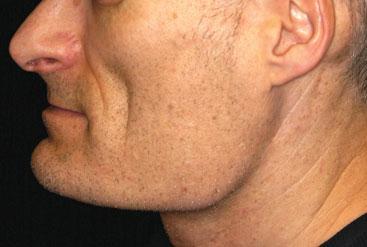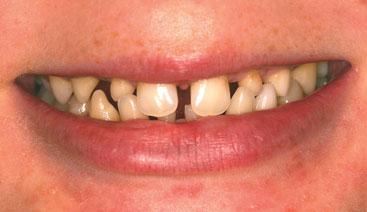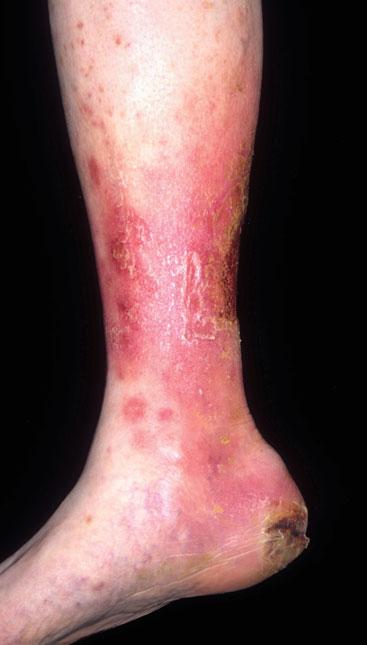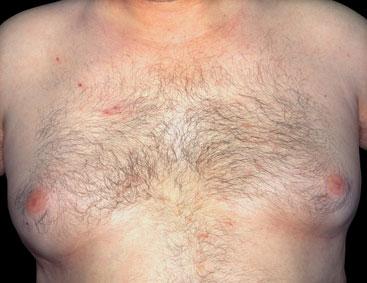Endocrinology
Dr Mike Wyndhamis a GP in a suburban practice in Edgware MiddlesexHe has always been a keen photogr...
Dr Mike Wyndhamis a GP in a suburban practice in Edgware MiddlesexHe has always been a keen photographer, and has been taking medical photographs for more than 25 years. He has been a regular contributor to the GP press and his work has also appeared in the British Medical Journal, The Pharmaceutical Journal and various medical text books
Endocrinological conditions fall firmly into the category of internal medicine, but somewhat surprisingly they often produce visible, physical signs and these may be useful signals to alert the practice nurse to the possibility that the individual has an underlying medical condition
ACROMEGALY
This is an uncommon condition which usually develops as a result of a growth hormone producing tumour in the pituitary. The diagnosis is usually made when the sufferer is 40-45 years of age. Headache may be a presenting symptom and visual field defects may be detectable on examination. The impact of growth hormone causes enlargement of the facial bones including macrognathia (a large jaw). Soft tissues may become affected, resulting in an enlarged tongue (macroglossia) and/or cardiomegaly. Heart failure may occur. The thyroid may develop into a multinodular goitre. The fingers may take on the appearance of sausages and overall may look like spades. Carpal tunnel syndrome may develop. Hormonal changes such as hyperprolactinaemia may develop due to the impact of a pituitary adenoma.

THYROTOXICOSIS
Hyperthyroidism is the result of a raised T4 or T3 and is more common in women than in men. Grave's disease (shown here) is the most common cause. The presenting symptoms include sweating, palpitations, nervousness, tremor, weakness and weight loss. Affected individuals may have noticed that their eyes have become prominent. i.e. exophthalmos. In younger people there is a predominance of symptoms relating to the sympathetic nervous system. However, the elderly are more likely to present with cardiac symptoms and signs such as atrial fibrillation. In Grave's disease there may be a diffusely enlarged goitre and a bruit (a hum audible with a stethoscope) may be heard.

PSEUDOHYPOPARATHYROIDISM (PHP)
In this inherited condition, there is a failure to respond to the circulating parathyroid hormone. The result is that there are low levels of calcium and raised levels of phosphate. This girl who had been struggling educationally presented with seizures. She was noted to have dental hypoplasia. There may be associated short stature and absence of the metacarpals particularly in the 4th and 5th fingers. When a fist is made the knuckle is absent in those fingers. The main aim of treatment is to return the calcium levels to normal.

HYPOTHYROIDISM
Under-activity of the thyroid gland may develop slowly and so the clinician has to be on the look-out for tell-tale signs. One has to be careful of saying 'never' but I can't ever remember finding hypothyroidism or anaemia in a patient presenting with TATT (tiredness all the time). When considering symptoms and signs of the condition, follow the midline working from the head downwards: hair loss, coarsening of the features, puffiness of the eyelids, macroglossia, enlargement of the thyroid gland, hoarseness/voice change, bradycardia, constipation, loss of periods or oligomenorrhoea, weight gain, feeling cold. Depression and loss of appetite or libido are also common. Diagnosis is confirmed with blood tests that will reveal lowered T4, and lowered or normal levels of T3.

DIABETES MELLITUS
Patients suffering from diabetes are more prone to infection. Common portals of entry include the foot with toe webs a risk zone with macerated skin infected with fungus. Dry skin on the legs may have small cracks which are a good place for opportunistic infection. Staph. aureus is the likeliest organism to be involved but Group A strep. should not be forgotten. This gentleman had developed pressure areas on his heel and leg which he was unaware of as a result of diabetic neuropathy. This had allowed infection to develop spreading through the skin (cellulitis). His blood glucose had got out of control with the infection (illness may cause a deterioration in diabetes.) With the extent of the cellulitis and loss of diabetic control it was deemed appropriate to admit this gentleman to hospital.

BICALUTAMIDE-INDUCED GYNAECOMASTIA
Prostate cancer is encouraged to progress in the presence of testosterone. Treatment may be directed to blocking the hormone and these agents are called anti-androgens. Bicalutamide may be used for locally advanced prostate cancer where there is a significant risk of further spread of the disease. As with any medication there may be a 'down side'. The anti-testosterone effects may allow the natural oestrogens to dominate, causing the breast tenderness and swelling termed gynaecomastia
